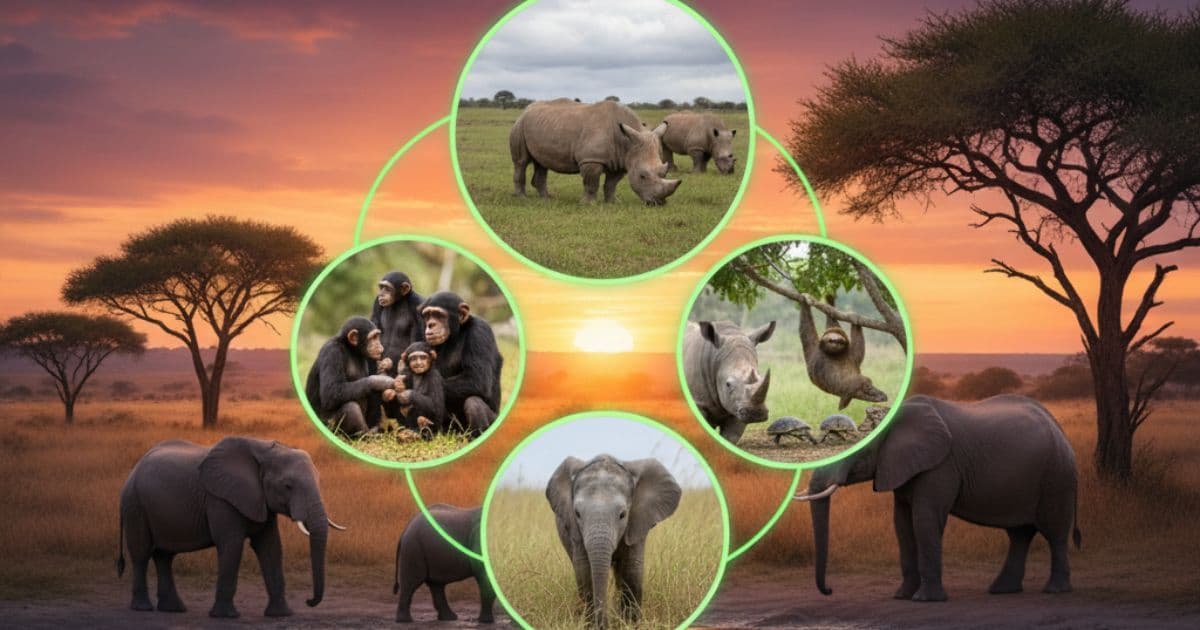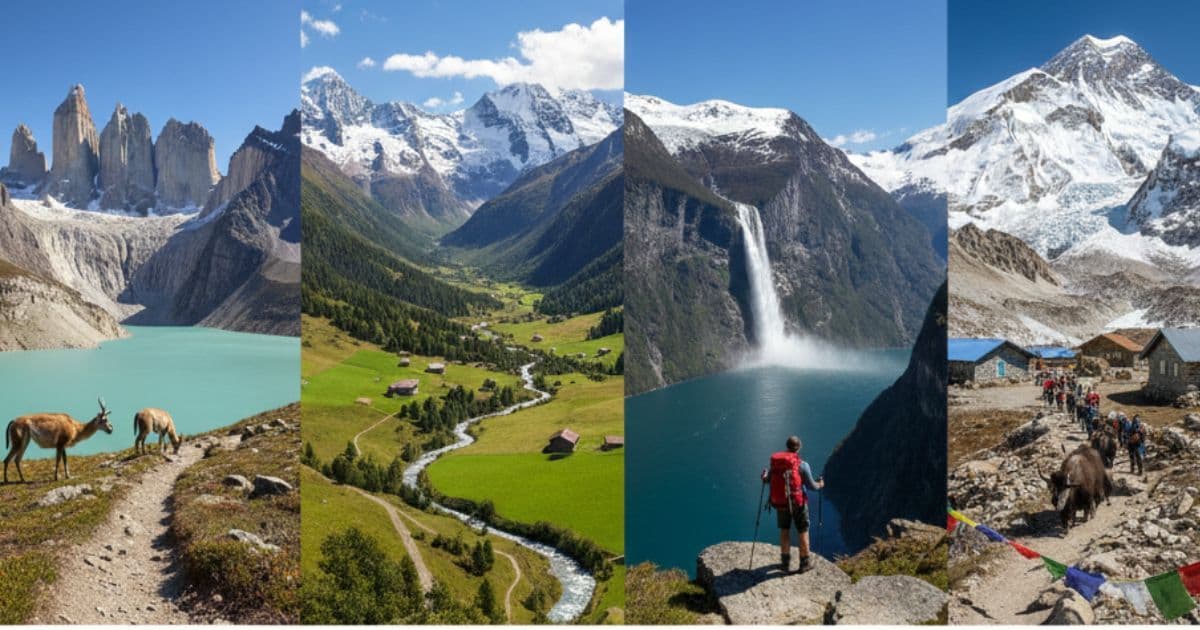Top Safari and Wildlife Tours Around the World in 2025

Embarking on a safari or wildlife tour is one of the most thrilling ways to connect with nature. Unlike visiting a zoo or a wildlife park, these experiences allow travelers to witness animals in their natural habitats, observe ecosystems in action, and gain insight into the delicate balance of life across the globe. Whether tracking the Big Five in Africa, spotting elusive snow leopards in the Himalayas, or exploring tropical wetlands teeming with rare creatures, wildlife tours offer unforgettable experiences that stay with travelers for a lifetime. Beyond adventure, these trips promote conservation awareness, supporting local communities and protecting endangered species through sustainable tourism initiatives. In 2025, a wealth of options exists for wildlife enthusiasts, each offering unique landscapes, species, and cultural encounters.
Africa: The Pinnacle of Safari Adventures
Africa has long been considered the ultimate safari destination. Its vast landscapes, rich biodiversity, and iconic wildlife make it a dream location for travelers seeking both adventure and natural beauty.
Serengeti National Park, Tanzania
Serengeti National Park is world-renowned for its spectacular wildlife and the annual Great Migration, where over a million wildebeest and hundreds of thousands of zebras and gazelles traverse the plains in search of fresh grazing. This migration is closely followed by predators, including lions, cheetahs, and hyenas, creating some of the most dramatic wildlife interactions on the planet. Beyond the migration, the Serengeti’s diverse ecosystems—from open savannahs to woodlands—offer year-round wildlife sightings. Visitors can enjoy game drives led by expert guides who provide insights into animal behavior, photography tips, and the park’s unique ecology. Hot air balloon safaris are also a popular option, offering breathtaking aerial views of the plains dotted with roaming wildlife and acacia trees.
Masai Mara National Reserve, Kenya
Located just across the border from Tanzania, Kenya’s Masai Mara National Reserve offers exceptional wildlife viewing opportunities. The reserve is famous for its large populations of lions, elephants, cheetahs, and rhinos. Its expansive savannahs and riverine landscapes provide stunning photographic opportunities, while hot air balloon rides at sunrise give a serene, panoramic view of wildlife below. The Masai Mara is also culturally rich, with the indigenous Maasai community playing an integral role in conservation and offering travelers a glimpse into their traditional lifestyle.
Kruger National Park & Sabi Sand Game Reserve, South Africa
Kruger National Park, one of Africa’s largest and most famous game reserves, is home to an impressive array of wildlife, including elephants, lions, leopards, rhinos, and buffalo. The park’s well-developed infrastructure makes it accessible for both first-time and seasoned safari travelers. Nearby Sabi Sand Game Reserve offers a more exclusive experience with luxury lodges, private guides, and night drives, allowing visitors to witness nocturnal species in action. The combination of Kruger’s expansive plains and Sabi Sand’s intimate wilderness ensures diverse experiences for safari enthusiasts, from close encounters with leopards to observing massive elephant herds interacting in their natural habitat.
Okavango Delta & Chobe National Park, Botswana
Botswana’s Okavango Delta, a unique inland wetland system, floods seasonally, creating a rich environment for wildlife. Visitors explore the delta via mokoro canoes (traditional dugout boats), quietly gliding through waterways teeming with hippos, crocodiles, and a myriad of bird species. Chobe National Park, famous for having one of the largest elephant populations in Africa, complements the delta with its open savannahs and riverine forests. Botswana’s commitment to conservation ensures that wildlife thrives, and travelers can enjoy immersive, low-impact safari experiences while contributing to ongoing preservation efforts.
Gorongosa National Park, Mozambique
Once heavily impacted by civil war, Gorongosa National Park has undergone a remarkable transformation. Today, it showcases thriving ecosystems with lions, wild dogs, elephants, and countless bird species. Conservation programs have focused on habitat restoration and wildlife reintroduction, creating a model for ecological recovery. Visitors can enjoy guided safaris, walking tours, and bird-watching excursions while learning about the park’s history and ongoing efforts to maintain biodiversity.
Asia: Diverse Ecosystems and Rare Species
Asia’s wildlife destinations offer unique encounters with species found nowhere else on Earth, often set against stunning landscapes that range from dense jungles to snow-covered mountains.
Kaziranga National Park, India
Kaziranga National Park in Assam, India, is globally recognized for its population of one-horned rhinoceroses. The park also houses tigers, elephants, swamp deer, and over 450 species of birds. Its extensive grasslands and wetlands provide ideal environments for spotting wildlife while promoting ecotourism that supports local communities. Visitors can enjoy guided jeep safaris and educational programs that offer insights into the park’s rich biodiversity and conservation efforts.
Ladakh, India – Snow Leopard Tracking
In the high-altitude deserts of Ladakh, wildlife enthusiasts have the rare opportunity to track the elusive snow leopard during the colder months. These elusive predators are incredibly well-camouflaged, making each sighting a moment of pure exhilaration. Accompanied by experienced guides, visitors can explore rugged landscapes dotted with small streams and rocky terrain, observing other species like Himalayan ibex and blue sheep along the way. Snow leopard expeditions not only offer adventure but also contribute to ongoing research and conservation efforts.
Sri Lanka – Leopard Safaris
Sri Lanka’s Yala National Park is famed for its high density of leopards, making it one of the best places in the world to observe these stealthy predators. Jeep safaris allow close encounters with leopards, elephants, sloth bears, and exotic bird species. The park’s diverse landscapes, from dry forests to lagoons, create perfect habitats for a wide variety of wildlife, and guided tours ensure travelers gain in-depth knowledge of animal behavior and ecology.
Americas: Tropical Wetlands and Unique Ecosystems
Pantanal Wetlands, Brazil
The Pantanal, the world’s largest tropical wetland, is an extraordinary destination for wildlife lovers. Its flooded plains and savannahs host jaguars, capybaras, giant otters, caimans, and an astonishing array of bird species. Guided boat tours and jeep safaris allow travelers to observe these animals in their natural habitat, while ecotourism programs help preserve the delicate balance of this ecosystem. The Pantanal is also less crowded than the Amazon, offering a more intimate and immersive wildlife experience.
Galápagos Islands, Ecuador
The Galápagos Islands are a living testament to evolution, home to species found nowhere else on Earth. Travelers can see giant tortoises grazing, marine iguanas basking on rocky shores, and colorful finches hopping along volcanic landscapes. Snorkeling and diving with playful sea lions and Galápagos penguins offers unparalleled underwater encounters, while guided tours educate visitors about conservation and the fragile ecosystems that make the islands unique.
Yellowstone National Park, USA
Yellowstone, America’s first national park, offers a vast wilderness where visitors can witness bison herds roaming freely, wolves hunting in packs, and bears foraging in forests. Its geothermal features, including geysers and hot springs, create dramatic landscapes that enhance the wildlife experience. Guided tours, photography workshops, and educational programs make Yellowstone an enriching destination for travelers of all ages.
Polar Regions: Extreme Environments, Unique Wildlife
Svalbard, Norway
The Arctic archipelago of Svalbard provides a once-in-a-lifetime opportunity to see polar bears, walruses, and Arctic foxes in their natural icy habitat. Expedition cruises allow travelers to navigate through fjords, glaciers, and ice floes while observing wildlife. The stark, breathtaking landscapes, combined with the thrill of spotting polar bears from a safe distance, make Svalbard one of the world’s most extraordinary wildlife destinations.
Antarctica – Penguin Colonies and Marine Life
Antarctica remains one of the last frontiers for wildlife exploration. Visitors aboard expedition cruises can witness massive penguin colonies, seals lounging on icebergs, and whales feeding in frigid waters. The region’s remote and pristine environment makes every encounter a special experience, and travelers contribute to conservation efforts by adhering to strict environmental guidelines.
Tips for Planning Your Safari
- Best Time to Visit: Different regions have optimal seasons for wildlife spotting. Africa’s dry season concentrates animals around water sources, while the Galápagos is best visited during dry months for marine life encounters.
- Responsible Tourism: Choose operators and lodges that support conservation, community development, and sustainable practices to minimize your ecological impact.
- Health and Safety: Ensure vaccinations are current, pack insect repellent, and consider travel insurance. Guided tours reduce the risk of accidents and help navigate wildlife safely.
- Packing Essentials: Neutral-colored clothing, binoculars, cameras, sturdy shoes, and sunscreen are must-haves. Layered clothing is ideal for regions with temperature fluctuations.
Experiencing Wildlife: A Journey to Remember
From the sweeping savannahs of Africa to the tropical wetlands of Brazil, the Galápagos archipelago, and the icy frontiers of the polar regions, wildlife tours offer unforgettable experiences for travelers in 2025. Each destination provides a unique glimpse into the intricate relationships between animals, plants, and landscapes. By choosing ethical operators, supporting conservation initiatives, and preparing adequately, travelers can enjoy immersive wildlife experiences while contributing to the preservation of these irreplaceable ecosystems. Whether it is the thrill of spotting a snow leopard in Ladakh, witnessing the grandeur of the Great Migration in Tanzania, or snorkeling with Galápagos penguins, wildlife travel promises adventure, education, and memories that will last a lifetime.



